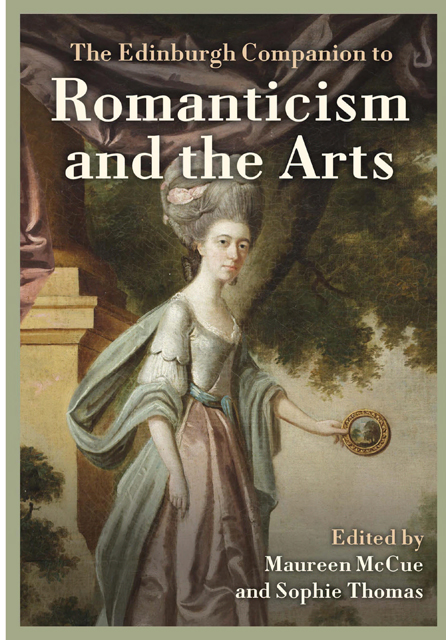12 - Convergence and Dissonance: Romantic Theatre and the Visual Arts
Published online by Cambridge University Press: 25 April 2023
Summary
Over the past decade there has been a growing interest in a wide spectrum of modes of visuality that co-existed and competed for attention during the Romantic period, ranging from illustration to the spectacle of the sublime, from waxworks to panoramas to theatrical portraits. This chapter examines the complex nexus of affinities and rivalries that linked the visual and performing arts and interrogates their symbiotic but deeply conflicted relationship. Both were prominent players in the burgeoning visual culture of late eighteenth- and early nineteenth-century London. As popular modes of cultural consumption and entertainment, they catered to and were shaped by the public’s growing fascination with visual spectacle, exhibition culture and celebrity, but diverged in fundamental ways. The tensions between drama as literary medium and as stage spectacle that permeated Romantic theatrical criticism is a glaring example of that divide as evidenced in the writings of William Hazlitt, Charles Lamb and Samuel Taylor Coleridge. The pantomime, which relied on extravagant scenic effects and stage tricks, was widely attacked by critics for transforming the stage into a tawdry spectacle and debasing public taste (D’Arcy Wood 2001, 19). As theatre became more visual in the late Georgian era, that criticism was increasingly levelled against more traditional dramatic productions at the patent houses. The enlargement of the stages at Drury Lane and Covent Garden after 1780, in conjunction with the heightened emphasis on elaborate sets and staging, also contributed to changes in acting style, as gestures and dramatic attitudes supplanted the face in registering emotion (West 1991a, 120–2; Meisel 1983, 50). That shift is encapsulated in the stately classical or academic style of acting associated with John Philip Kemble, in particular.
Artists like Joshua Reynolds, George Romney and Thomas Lawrence, who frequented the theatre and had close personal ties to the stage, were attracted to actors as subjects and the opportunities they offered for elevating portraiture and expanding its expressive parameters. The celebrity of theatrical stars like David Garrick, Frances Abington, Sarah Siddons and Kemble intensified the appeal of their portraits at the Royal Academy Exhibitions and promoted the careers of both artist and performer.
- Type
- Chapter
- Information
- The Edinburgh Companion to Romanticism and the Arts , pp. 220 - 236Publisher: Edinburgh University PressPrint publication year: 2022



